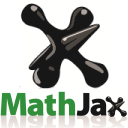Blog by Sean Hays
Out of all racial demographics in the United States, single-race Native Americans have the highest poverty rate at 28.3% [1]. Basic needs can be hard to come by for some Native Americans, as 7.5% do not have access to clean drinking water [2]. Conditions are especially severe when looking at reservations. For instance, the Navajo Nation has a poverty rate of 40% [3], and as of 2007 the Pine Ridge Reservation had a life expectancy of 48 years for men and 52 for women [4].
One of the pathways to addressing these problems is to increase educational attainment for Native Americans. Organizations like the Society for the Advancement of Chicanos/Hispanics and Native Americans in Science (SACNAS) attempt to empower potential Native American scientists through community events and other avenues. People like me, who’s grandfather was full-blooded Choctaw, are invited to become members of SACNAS. Being a math major who conducted research under Dr. Pamela Harris, I was given funding to attend the 2019 SACNAS Diversity in STEM conference in Honolulu, Hawaii. It was the first STEM conference I had ever been to, and I was the first in my family to go to one, so I had no idea what to expect. There were many interesting events at the conference, from university-style lectures to an exposition hall featuring graduate schools. One of my favorite parts were the speaking sessions given by selected SACNAS members.
One speech stood out. A Native American professor, Karletta Chief from the University of Arizona, talked about her upbringing. She mentioned how she grew up in a household without running water or electricity. She explained how difficult it was to find other Native Americans in science, and that many potential ones do not make it through college or even high-school. It was inspiring to see some audience members give her a standing ovation when her speech concluded.
Another memorable moment happened right before the conference. I was attending an event called the Modern Math Workshop, which gathered mathematical-oriented students and faculty. There was a dinner reception where attendees could meet and talk about their backgrounds. Everyone seemed engaged in conversation, so I considered whether I should just head back to my hotel room.
However, I happened to see an old man sitting by himself leaning over his meal. His appearance had similarities to my grandfather. “Are you Native American?”, I asked him. “Yes, Navajo.”, he replied. I told him I was Choctaw, and that he was the first Native American I had met thus far. We briefly talked about how the Navajo and Choctaw served as codetalkers during the world wars, and then I left to let him finish his dinner. When I said goodbye, he responded: “it was nice to meet you, Sean.” Now I have been told that phrase many times before, but there was an authenticity to his voice that startled me. He did not say it in the familiar tone, as it is usually said in formality. He meant it. I could tell he was happy that I was there, as it showed that a Native American was progressing in mathematics.
What I gathered from that experience and the SACNAS conference overall, is that my journey through mathematics is an endeavor of many people and not just myself. It is a unique type of encouragement that only a conference like this can provide, and I would suggest it to anyone considering it.
Sean Hays is a senior mathematics student at the University of South Florida. He plans to pursue a Ph.D in pure mathematics starting in fall 2020. Until then, he plans to work as a math tutor for local college students.



You must be logged in to post a comment.